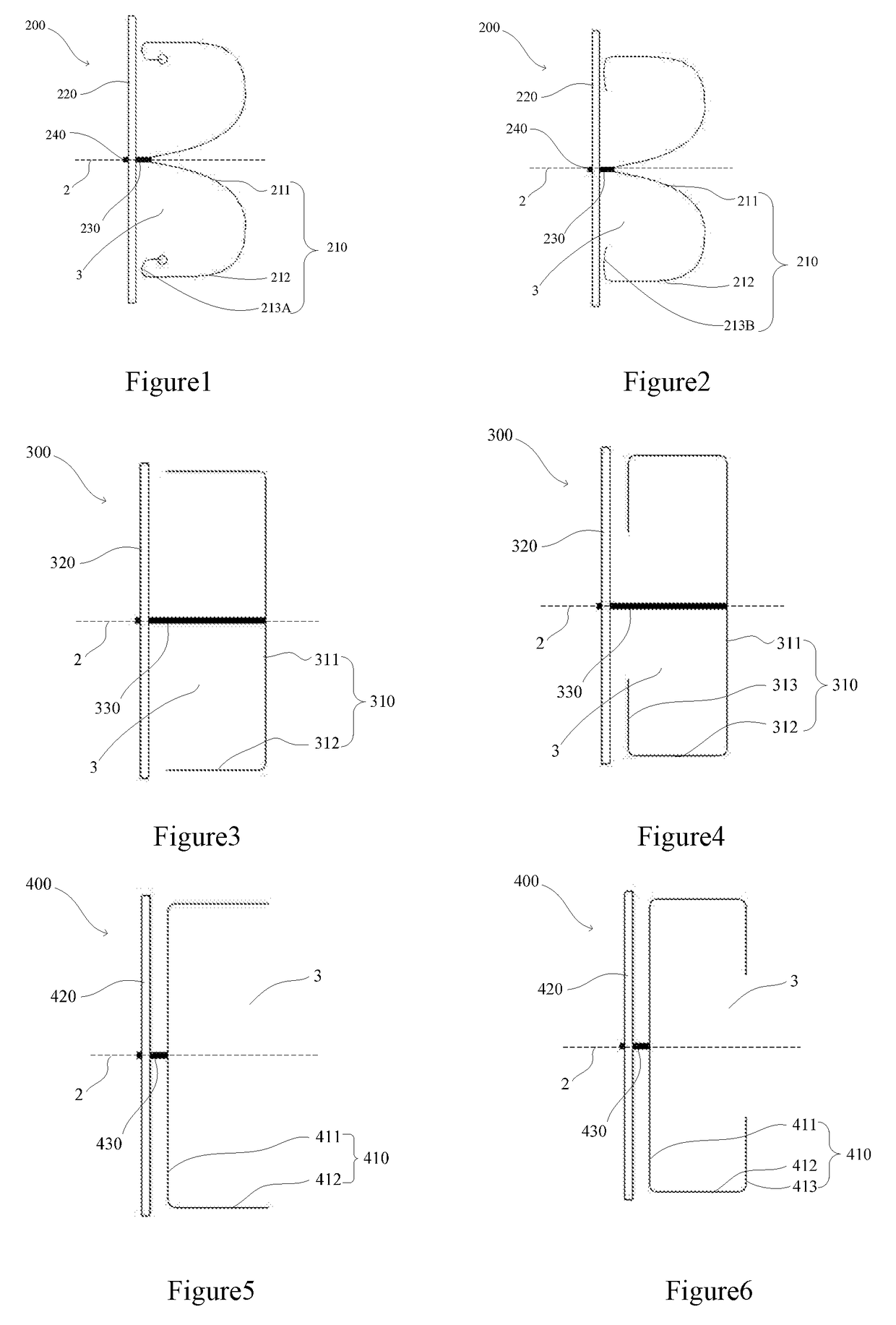Left Atrial Appendage Occluder
a technology of left atrial appendage and occluder, which is applied in the field of medical devices, to achieve the effect of enhancing the occlusion effect and reducing the risk of abrasion or damage to the opening of the left atrial appendage caused by the sealing par
- Summary
- Abstract
- Description
- Claims
- Application Information
AI Technical Summary
Benefits of technology
Problems solved by technology
Method used
Image
Examples
first embodiment
[0073]Referring to FIGS. 1-2, the left atrial appendage occluder 200 according to a first embodiment of the present disclosure has a central axis 2. A fixing part 210 of the left atrial appendage occluder 200 converges at one end and is connected with a connection part 230. Moreover, the fixing part 210 comprises a concave zone 211 formed by radially spreading trolrt this end to a distal end, and a hung zone 212 formed through the extension from the concave zone 211 to a proximal end after bending, wherein the hung zone 212 defines an opening 3 towards the proximal end. The fixing part 210 may be braided integrally with braid wires. For example, the concave zone 211 and the hung zone 212 are braided bodies having a plurality of grids; and the fixing part 210 may also be formed by the cutting of metal tubes. For example, the concave zone 211 and the hung zone 212 respectively comprise a plurality of cut metal rod parts that may be connected with or spaced apart from one another. Acco...
second embodiment
[0076]Referring to FIGS. 3-4, a difference between the left atrial appendage occluder 200 in the first embodiment and a left atrial appendage occluder 300 according to a second embodiment is that the distance between a distal end of a sealing part 320 of the left atrial appendage occluder 300 and a distal end of the fixing part 310 along the direction of a central axis 2 is basically equal to the length of a connection part 330 itself along the central axis 2. The connection part 330 may comprise a rod part and may comprise a braided body, and may further comprise a plurality of metal wires bound together, which will not be described in greater detail herein.
[0077]The fixing part 310 converges at an end portion and is connected with one end of the connection part 330, and the fixing part 310 comprises a distal end surface zone 311 formed by radially spreading from the end portion, and a hung zone 312 formed by extension from the distal end surface zone 311 to the proximal end after ...
third embodiment
[0079]A difference between the left atrial appendage occluder 200 of the first embodiment and a left atrial appendage occluder 400 according to a third embodiment is that a fixing part 410 of the left atrial appendage occluder 400 converges at an end portion and is connected with a connection part 430, and the fixing part 410 comprises a proximal end surface zone 411 formed by radially spreading from this end portion, and a hung zone 412 formed by the extension from the proximal end surface zone 411 to the distal end after bending, wherein an opening 3 is defined by the hung zone 412 towards the distal end. The fixing part 410 may be integrally braided with braid wires. For example, the proximal end surface zone 411 and the hung zone 412 are braided bodies having a plurality of grids. The fixing part 410 may also be formed by cutting a metal tube. For example, the proximal end surface zone 411 and the hung zone 412 respectively comprise a plurality of cut metal rod parts connected w...
PUM
 Login to View More
Login to View More Abstract
Description
Claims
Application Information
 Login to View More
Login to View More - R&D
- Intellectual Property
- Life Sciences
- Materials
- Tech Scout
- Unparalleled Data Quality
- Higher Quality Content
- 60% Fewer Hallucinations
Browse by: Latest US Patents, China's latest patents, Technical Efficacy Thesaurus, Application Domain, Technology Topic, Popular Technical Reports.
© 2025 PatSnap. All rights reserved.Legal|Privacy policy|Modern Slavery Act Transparency Statement|Sitemap|About US| Contact US: help@patsnap.com



